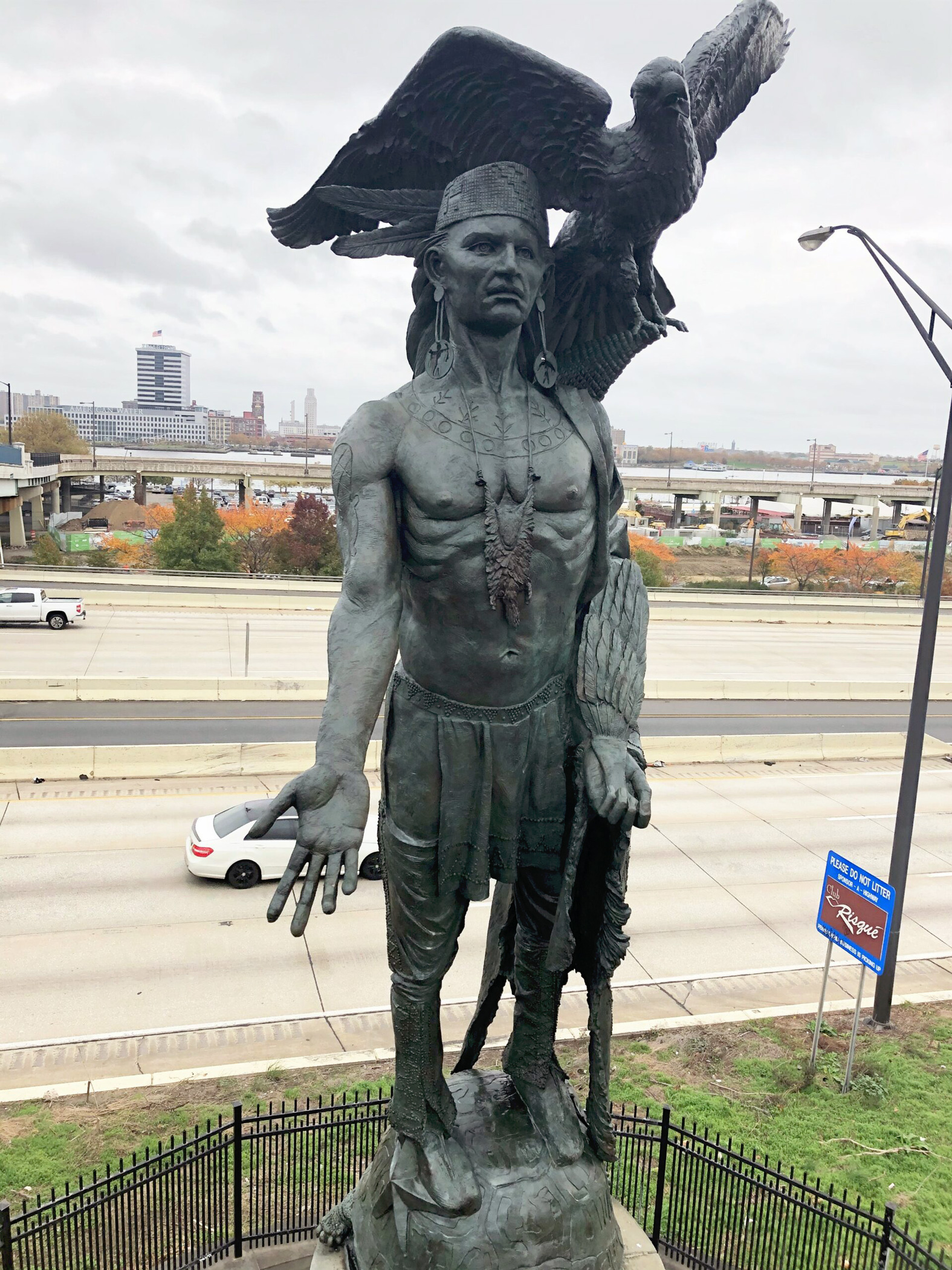Punk - gift of the Native Americans
Indian Givers Series vol. 2
What is the connection between Johnny Rotten and Chief Tamanend?


One is known as a loud, abrasive iconoclast; the other is revered as a wise, benevolent leader. As unrelated as they seem at first, a word from Chief Tamanend's language that he taught to early English settlers has given its name to Mr. Rotten's type of music. The word punk comes from the Lenape language: the Lenape word punkw means 'dust'. It could also mean the dry rotten wood dust formed in a decaying tree, which was useful as tinder; this was the original sense of the word as borrowed into English, and it still has this meaning, mostly as a stick of compressed wood dust smoldering at one end, used to light fireworks from a distance.
The Lenape word is also found in the name of Punxsutawney, Pennsylvania, from Lenape Punkwsutènay, which literally means 'sandfly town' or 'mosquito town'. The word for sandfly or mosquito is punkwës, derived from punkw 'dust' and the animate diminutive suffix -ës; i.e., little creature of the dust. The word utènay means 'town'. The name was a clear warning to anyone who went there what to expect; white people ignored the warning and built a town there anyhow. And got bug-bitten a lot.
In English, starting from the basic meaning of rotten wood dust, the word punk developed a wider range of meanings around the concept of 'something rotten, worthless, rubbish', first recorded in 1869. The figurative use for a worthless person, a young hoodlum, is first found in a letter by e.e. cummings in 1917, probably adapted from the underworld slang term punk kid meaning a criminal's apprentice, which goes back to 1908. Punk rock arose in the 1970s as a voice for youth who felt they'd been treated as worthless, like rotten dust, and who could catch fire like tinder. So a fairly direct linguistic thread connects the Lenni Lenape nation with a modern movement that has had and still has a huge impact on music in our lifetime. This is one example that may give an idea of how much of a legacy from the American Indians is still present in our everyday lives, buried and mostly invisible under the dust of centuries... unless one knows where to look.
What is the connection between Johnny Rotten and Chief Tamanend?


One is known as a loud, abrasive iconoclast; the other is revered as a wise, benevolent leader. As unrelated as they seem at first, a word from Chief Tamanend's language that he taught to early English settlers has given its name to Mr. Rotten's type of music. The word punk comes from the Lenape language: the Lenape word punkw means 'dust'. It could also mean the dry rotten wood dust formed in a decaying tree, which was useful as tinder; this was the original sense of the word as borrowed into English, and it still has this meaning, mostly as a stick of compressed wood dust smoldering at one end, used to light fireworks from a distance.
The Lenape word is also found in the name of Punxsutawney, Pennsylvania, from Lenape Punkwsutènay, which literally means 'sandfly town' or 'mosquito town'. The word for sandfly or mosquito is punkwës, derived from punkw 'dust' and the animate diminutive suffix -ës; i.e., little creature of the dust. The word utènay means 'town'. The name was a clear warning to anyone who went there what to expect; white people ignored the warning and built a town there anyhow. And got bug-bitten a lot.
In English, starting from the basic meaning of rotten wood dust, the word punk developed a wider range of meanings around the concept of 'something rotten, worthless, rubbish', first recorded in 1869. The figurative use for a worthless person, a young hoodlum, is first found in a letter by e.e. cummings in 1917, probably adapted from the underworld slang term punk kid meaning a criminal's apprentice, which goes back to 1908. Punk rock arose in the 1970s as a voice for youth who felt they'd been treated as worthless, like rotten dust, and who could catch fire like tinder. So a fairly direct linguistic thread connects the Lenni Lenape nation with a modern movement that has had and still has a huge impact on music in our lifetime. This is one example that may give an idea of how much of a legacy from the American Indians is still present in our everyday lives, buried and mostly invisible under the dust of centuries... unless one knows where to look.